I remember that some time ago, a student mentioned to me a k-drama called “Fated to love you”. A holiday period was approaching so, without much to do, I decided to watch it. The k-drama was entertaining, nothing out of the ordinary, but within the story, almost at the end of the chapters (unfortunately), there was something that caught my attention quickly: some paintings.
What happened
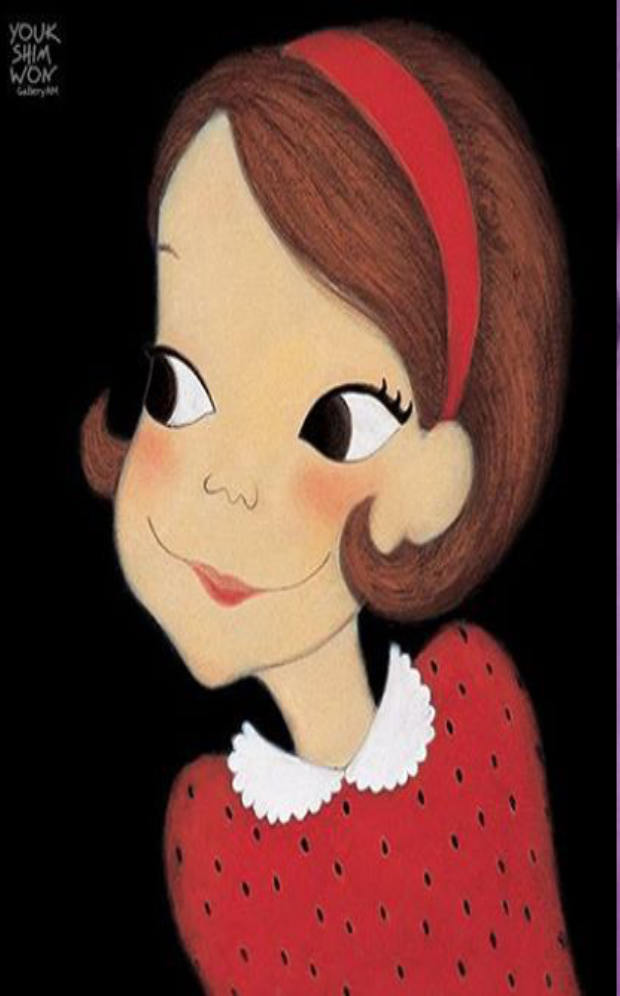
Let me explain, the main character of the story, whose name I do not remember, but we will call her “Anita” (excuse me, I am lacking imagination, and the name is not relevant for this article), becomes a recognized painter and makes her works known in a museum.
The paints, immediately, capture my attention.
Compared to the great works we conceived when talking about art, they are not very relevant, but I found them interesting.
I paid attention to each one of them while the camera focused on them, and the first thing I realized was that they were only painted women, there were no men or children, only women.
The second thing I noticed was the colors: “they were colors, were they happy?” I thought, and the third thing I noticed was the unforced smile of the protagonists of the works.
I didn’t think twice, and I started looking for the real artist. It took me a few hours, but in the end, I found her: Youk Shim Won.
The transfiguration of the traditional
Youk Shim Won is a Korean artist, of whom very little is known about her personal life. The works of this enigmatic artist have marked a new trend in Oriental art, leaving aside landscapes and nature, without completely forgetting the traditional materials of her country, such as ‘hangi (traditional Korean thick paper) and bunche (solid paint, which is used by grinding it into flour).

Her technique consists of crushing the bunche and the ‘hangi together, adjusting the thickness that is desired to obtain with a little water. Once a paste is obtained, it is shaped into a smooth ‘hangi. This procedure is simple, but laborious to do, unlike oil.
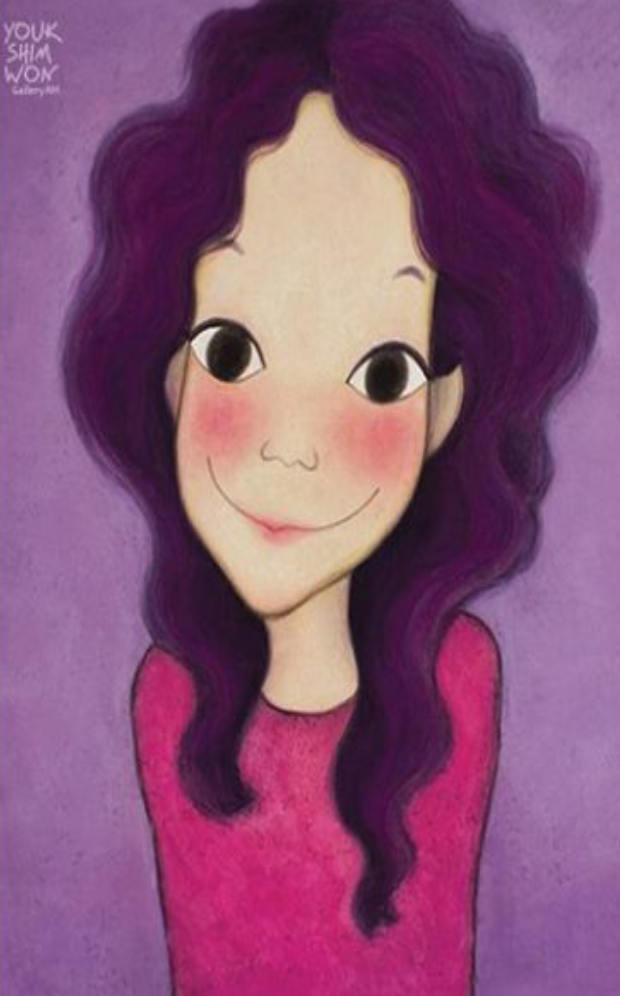
However, she has confirmed in several interviews that she greatly appreciates using this technique to create her paintings, because it shapes part of her culture, thus renewing traditional art.
This art form that Shim Won uses, allows her to show unique colors that blend with the natural texture of the paper resulting in the characters in her works looking animated and expressive.
Each color she traces in her works is a mark, not just her own, but that of the women she gradually captures with delicacy on the canvas, to enter the concept of “the happy woman”.
Shim Won has mentioned that her main idea is to show, not only the beauty of women but also the happiness that emanates from them.
She is a faithful believer that women who have aspirations for happiness, no matter what field of their life, whether it is work or academia, will give them beauty both inside and out.
his idea, besides being reflected in the colors and their combinations, can also be noticed in the look of all her protagonists. Look, which of course, is difficult to ignore. All these elements, despite being “simple”, speak as a whole.
Beyond things as a whole
If we take into account some of the principles of Gestalt theory (which seeks to make sense of how our mind perceives things as a whole, rather than each of the elements) specifically those of simplicity, figure and background, and proximity, we will realize how much Shim Won tells us in his works.
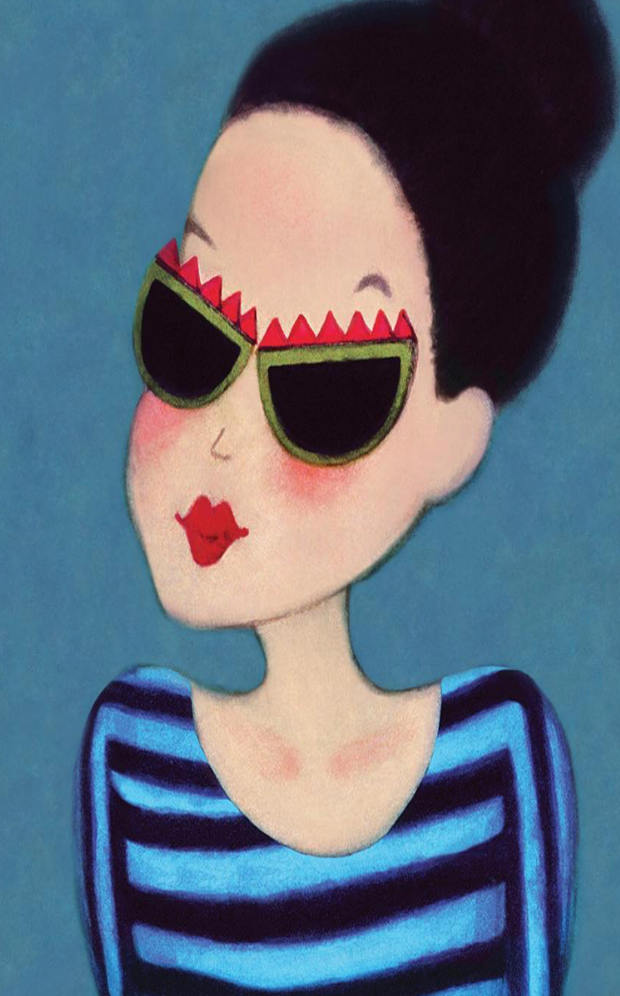
In the article “Simplicity, symmetry and more: The theory of Gestalt and the design principles it originated” by Laura Bushe, she summarizes these principles:
Simplicity: see the image as a whole.
Figure and background: observe which is the figure and which is the background.
Proximity: depending on how close the figures are, they are perceived in the same group.
It is easy to see the simplicity of Shim Won’s work because it is not loaded with elements, we only have the silhouette of the woman on a background that does not go beyond color, and this allows us to exploit the second principle: figure and background.
Shim Won’s backgrounds usually use only one color, but the textures of the technique she uses to give the illusion of using different shades of that same color. Also, the background always contrasts with the colors that the figure will wear, which makes it possible to appreciate it by itself, while the figure (always women), is usually more overloaded.
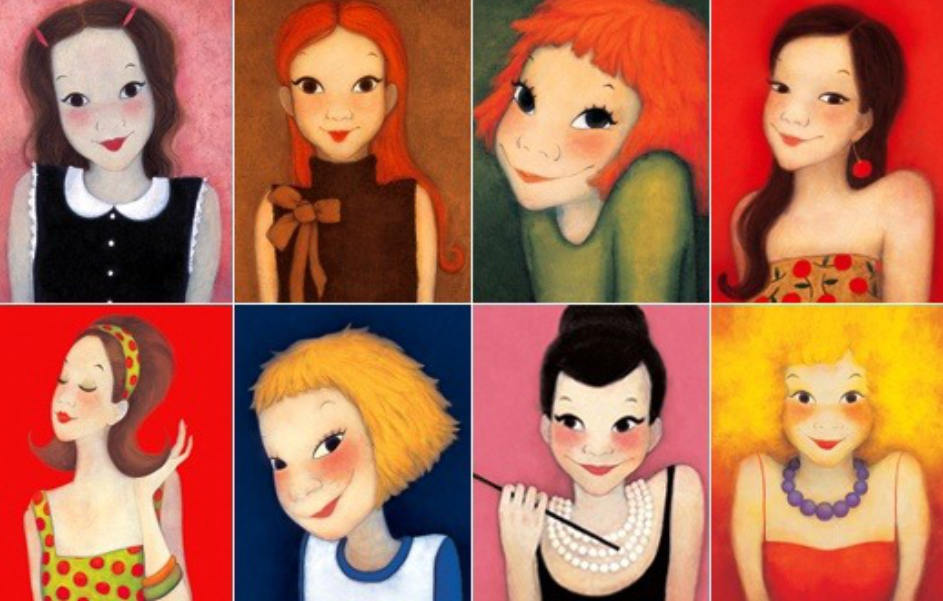
In the figure, we find the most striking thing: the look, an element that we mentioned before, is difficult to ignore because of the dimensions that it has. Being large it is easy to detect that naivety, that secret that they seem to be keeping. They are looks that show happiness, and in case that is not clear to us, we have the smile, that matches the eyes, the blush that accompanies our protagonists making them look more alive, giving a pseudo-realistic touch to the work.
The details they have on their clothes are usually small but equally striking, such as necklaces, headbands, hairpins, some prints on their clothes, this mythicizes more to the figure, because it makes us imagine what life could lead each of these women, what do they do in their free time?
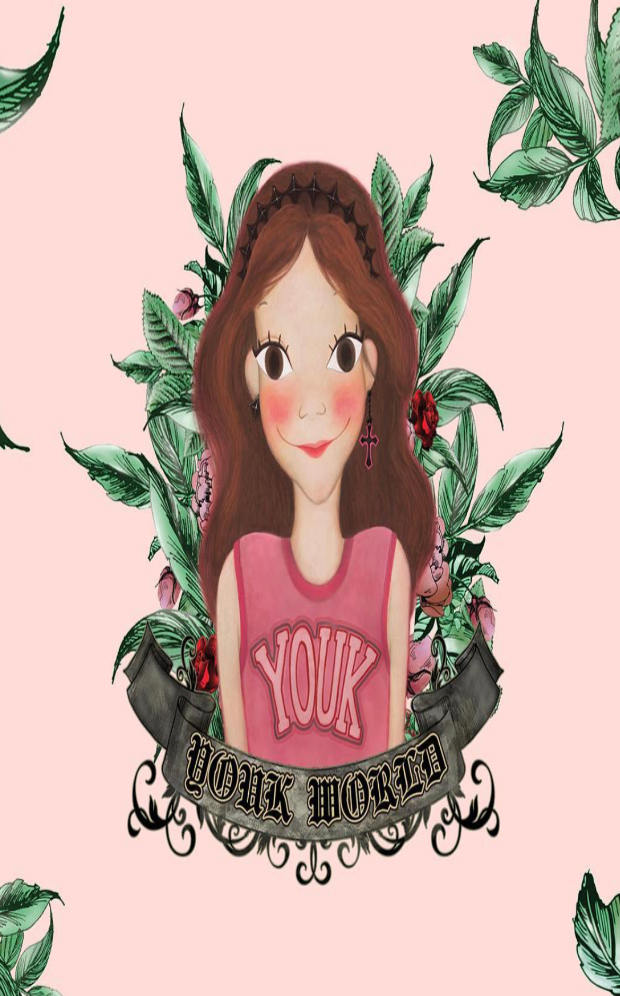
Now, we come to an important point, proximity. There are few works by Shim Won that present two figures in the same background, but what if we take Shim Won’s protagonists as figure 1 and the spectator as figure 2? Then, we would be talking about fairly proximity.
If we analyze the artist’s figures, they are quite “close”. They are so close that we only see illustrations of the bust at the head, which infers that they are close to us, and this gives a sense of empathy, of feeling defined by the dream of seeking happiness from small things that help us feel identified. You have to ask yourself: what person does not feel identified with the student, with the grandmother, with whom she gets ready to get dressed? or what person, even, has not thought about a relative when seeing these paintings? This is the marvel of Kim Shim Won’s work, of feeling identified with all these women she presents to us.
Women leaving Korea
Although Shim Won has presented herself in several museums since his beginnings as an artist, she was not recognized until 2005. Year when she ventured to make her brand, which has her name and the first collections she brought out were bags and fashion accessories, which have her paintings in print, which bear Shim Won’s unique brand: joy.
Many characters are wonderful expressions that you will never forget once you see them. Even if the characters are completely different, you can feel something like “Oh, it’s a YOUK SHIM WON character”, and each character has a common power. Somehow, characters so unique and wonderful that you feel energetic just by looking at them. Let’s be happy with Youk Shim Won’s characters! Otto Kim (Korean illustrator).
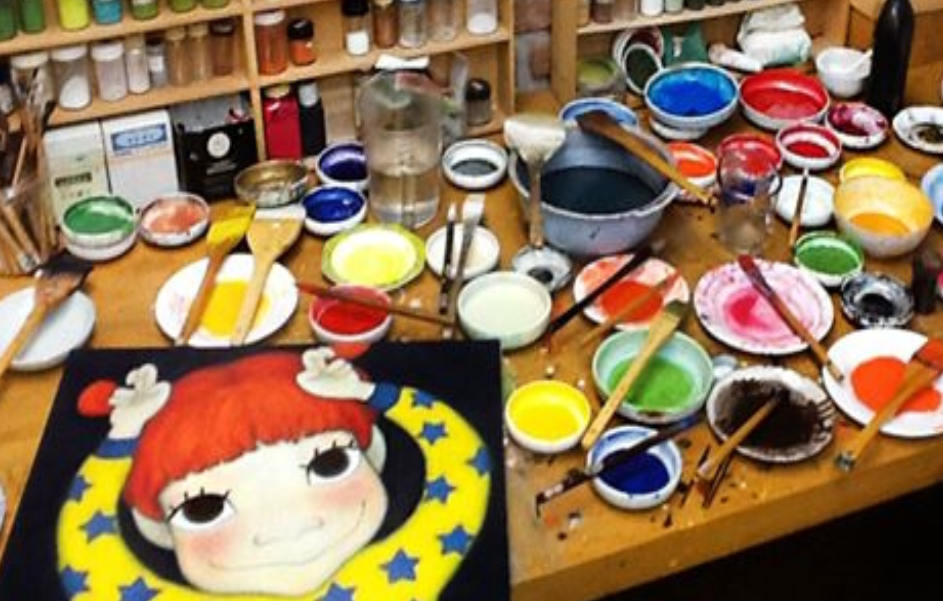
The latter gave the artist a lot of followers, such was her fame that several recognized brands in Korea, especially clothing, wanted to collaborate with her. Even popular k-dramas at the time worked with the designs of Shim Won, as was the case of the already so well known k-drama Boys Over Flowers.
Despite the popularity that this talented woman had at that time in Korea, by the year 2015 she became known outside of her country because she worked together with a bank.
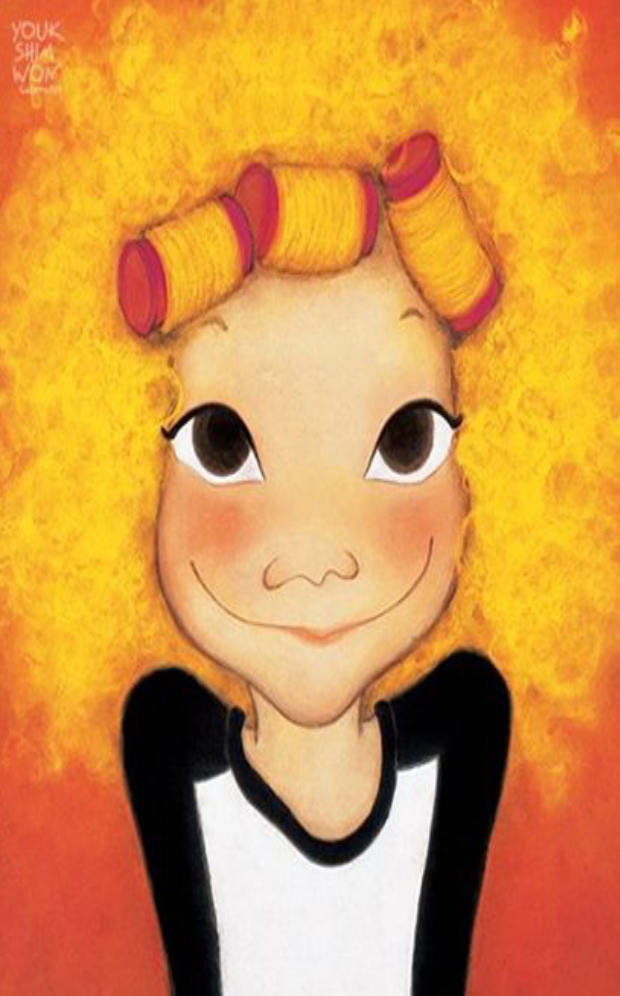
Work in which credit cards and bank books were printed with Shim Won’s designs.
As a result, in just a few months, her brand’s stores multiplied to the extent that six stores have opened in mainland China since 2015, including those in Shanghai, Tianjin, Chengdu, Qingdao, Hong Kong, and Changsha, and Japan.
And she was able to achieve all this for the simple reason of wanting to capture the obvious: the aspiration to happiness because her work not only encourages women to dream but also the general public and shows them that their nature can be beautiful in itself. All women are Youk Shim Won’s muses, they all show that whatever you do, however small if you enjoy it, it will lead you to find your happiness and thus, your beauty.


